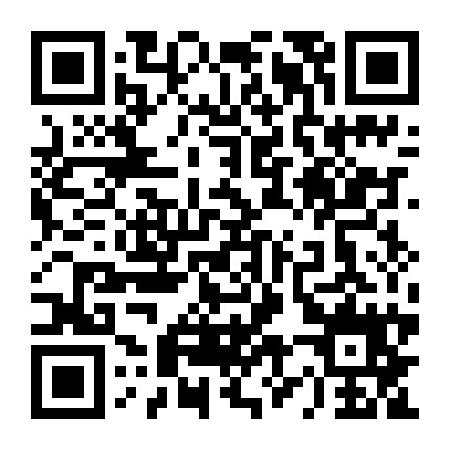Part IV: Reading Comprehension (30%)
Passage 3
Information technology that helps doctors and patients make decisions has been around for a long time. Crude online tools like WebMd get millions of visitors a day. But Watson is a different beast. According to IBM, it can digest information and make recommendations much more quickly, and more intelligently, than perhaps any machine before it一processing up to 60 million pages of text per second, even when that text is in the form of plain old prose, or what scientists call “natural language”.
That’s no small thing, because something like80 percent of all information is uunstructuredIn medicine, it consists of physician notes dictated into medical records, longwinded sentences published in academic journals, and raw numbers stored online by public-health departments. At least in theory, Watson can make sense of it all. It can sit in on patient examinations, silently listening. And over time, it can learn and get better at figuring out medical problems and ways of treating them the more it interacts with real cases.
Watson even has the ability to convey doubt. When it makes diagnoses and recommends treatments, it usually issues a series of possibilities, each with its own level of confidence attached. Medicine has never before had a tool quite like this. And at an unofficial coming-out party in Las Vegas last year, during the annual meeting of the Healthcare Information and Management Systems Society, more than 1000 professionals packed a large hotel conference hall, and overflow room nearby, to hear a presentation by Marty Kohn, an emergency-room physician and a clinical leader do the IBm team training Watson for health care.
Standing before a video screen that dwarfed his large frame, Kohn described in his husky voice how Watson could be a game changer —not just in highly specialized fields like oncology but also in primary care, given that all doctors can make mistakes that lead to costly, sometimes dangerous, treatment errors.Drawing on his own clinical experience and on academic studies, Kohn explained that about one-third of these errors appear to be products of misdiagnosis, one cause of which is “anchoring bias”: human beingstendency to rely too heavily on a single piece of information .This happens all the time in doctors’offices,clinics, and emergency rooms, a physician hears about two or three symptoms, seizes on a diagnosis consistent with those, and subconsciously discounts evidence that points to something else. Or a physician hits upon the right diagnosis, but fails to realize that it’s incomplete, and ends up treating just one condition when the patient is, in fact, suffering from several. Tools like Watson are less prone to those failings. As such, Kohn believes, they may eventually become as ubiquitous in doctors’offices as the stethoscope.“Watson fills in for some human limitations. ” Kohn told me in an interview. “Studies show that human are good at taking a relatively limited list of possibilities and using that list, but a far less adept at using huge volumes of information. That’s where Watson shines: taking a huge list of information and winnowing it down. ”
51. What is Watson?
A. It is a person who aids doctors in processing medical records.
B. it is an online tool that connects doctors over different places.
C. It is an intelligent computer that helps doctors make decisions.
D. It is a beast that greets millions of visitors to a medical institution.
52. Which of the following is beyond Watson’s ability?
A. Talk with the patient
B. Calculate probability
C. Recommend treatment
D. Process sophisticated data
53. Marty Kohn .
A. gave a presentation at an academic conference
B. works for the IBm Training Division
C. is a short person with a husky voice
D. expressed optimism for Watson
54. “Anchoring bias” .
A. is a device ubiquitous in doctors’offices
B. is less likely to be committed by Watson
C. happens in one third of medical treatments
D. is a wrong diagnosis with incomplete information
55. Which of the following may be the best title of the passage?
A. Watson as a Shining Star
B.The Risks of Misdiagnosis
C. The Robot Will See You Now
D. IBM’s It Solution to Medicine
考博必备!历年真题及答案
考博精品好课,就选新东方!

 资料下载
资料下载
【必看】考博英语词汇10000例精解
发布时间:2020-09-02关注新东方在线服务号
回复【10000】免费获取
医学考博英语作文核心基础词汇整理
发布时间:2020-04-15关注新东方在线服务号
回复【医学考博】获取
医学考博英语阅读理解练习资料
发布时间:2020-04-15关注新东方在线服务号
回复【医学考博】获取
法学考博英语高频词汇word版
发布时间:2020-04-15关注新东方在线服务号
回复【医学考博】获取
医学博士英语统考真题及解析
发布时间:2019-12-26关注新东方在线服务号
回复【考博真题】获取
全国医学博士外语统一考试真题
发布时间:2019-12-26关注新东方在线服务号
回复【考博真题】获取
中科院考博英语复习备考实战经验分享
发布时间:2019-12-26关注新东方在线服务号
回复【考博经验】获取
中科院考博英语真题练习资料
发布时间:2019-12-26关注新东方在线服务号
回复【考博真题】获取

关注新东方在线服务号
关注新东方在线服务号,
免费获取考博必看干货资料

 推荐阅读
推荐阅读
沈阳工业大学2022年博士研究生招生考试英语真题B卷
来源 : 沈阳工业大学 2022-12-26 16:19:18 关键字 : 沈阳工业大学2022博士英语真题
沈阳工业大学2022年博士研究生招生考试英语真题A卷
来源 : 沈阳工业大学 2022-12-26 16:18:19 关键字 : 沈阳工业大学2022博士英语真题
沈阳工业大学2021年博士研究生招生考试英语真题B卷
来源 : 沈阳工业大学 2022-12-26 16:09:06 关键字 : 沈阳工业大学2021博士英语真题
沈阳工业大学2021年博士研究生招生考试英语真题试卷A卷
来源 : 沈阳工业大学 2022-12-26 16:07:31 关键字 : 沈阳工业大学2021博士英语真题
沈阳工业大学2020年博士研究生招生考试英语真题试卷
来源 : 沈阳工业大学 2022-12-26 16:04:42 关键字 : 沈阳工业大学2020年博士英语真题


 考博好课推荐
考博好课推荐
基础薄弱,备考迷茫,送纸质资料
价格 : ¥2280元
资深教师,教学简明,直接有效!
价格 : 0元
 资料下载
资料下载
关注新东方在线服务号
回复【10000】免费获取
关注新东方在线服务号
回复【医学考博】获取
关注新东方在线服务号
回复【医学考博】获取
关注新东方在线服务号
回复【医学考博】获取
关注新东方在线服务号
回复【考博真题】获取
关注新东方在线服务号
回复【考博真题】获取
关注新东方在线服务号
回复【考博经验】获取
关注新东方在线服务号
回复【考博真题】获取

 阅读排行榜
阅读排行榜
 相关内容
相关内容